Amateur Radio Public Seismic Network
Magnitude 7.2 KEPULAUAN TALAUD, INDONESIA
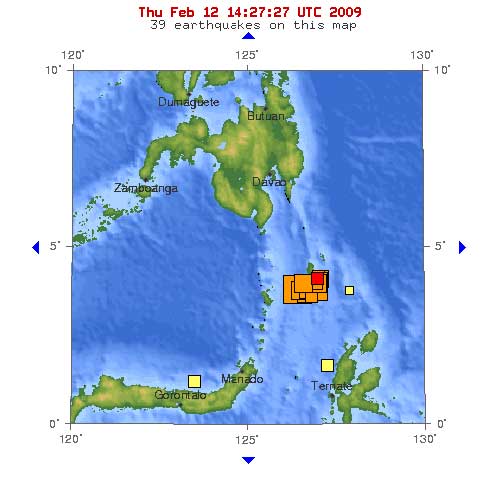
Wednesday, February 11, 2009 at 17:34:50 UTC
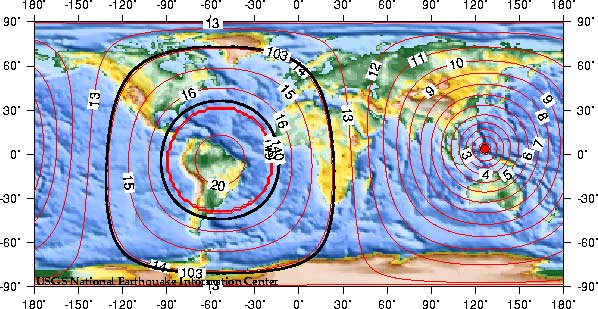
Theoretical P-Wave Travel Times
San Francisco, California
Distance
(degrees) 104.16 Travel Time (min:secs) 13:59.7 Arrival Time UTC 17:48:51.7 Pdiff
Recorded by ARPSN, Cobb, CA

Amateur Radio Public Seismic Network
Audio Control
Stop Play
VolksMeter Channel One & Two - 200902.11
VolksMeter FFT-CSP Plots
A New Look at an Old Tool:
the Cumulative Spectral Power of Fast-Fourier Transform Analysis
Sheng-Chiang Lee and Randall D. Peters
Physics Department, Mercer University, Macon, GA 31207
Click Here for Information
[Plots provided by Randall D. Peters, PhD]
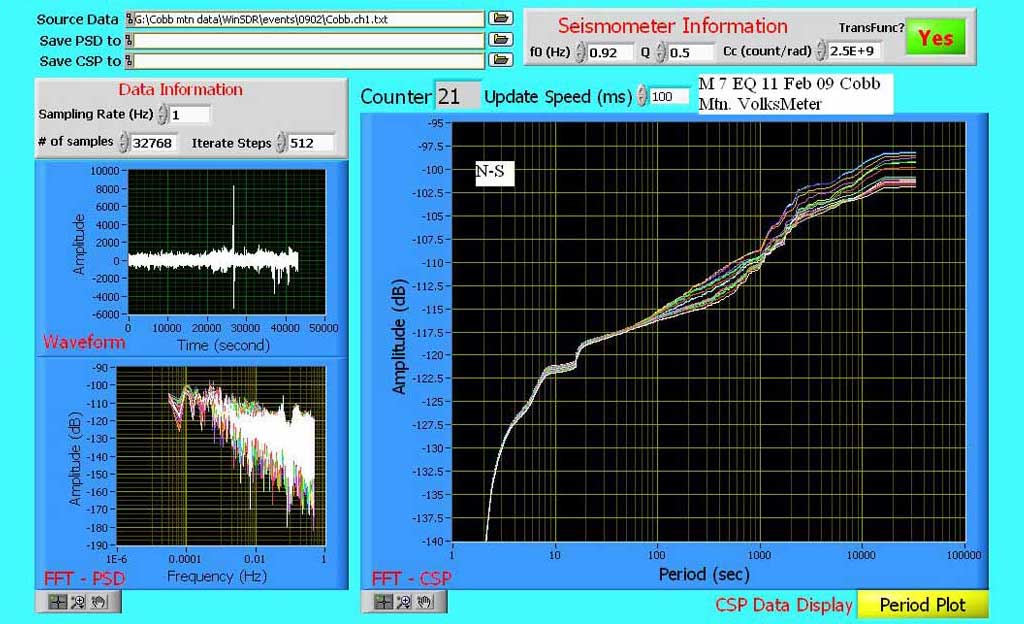
Cobb [Mountain], CA - N/S Magnitude 7.2 Recorded by ARPSN - Click for large image

Cobb [Mountain], CA - E/W Magnitude 7.2 Recorded by ARPSN - Click for large image
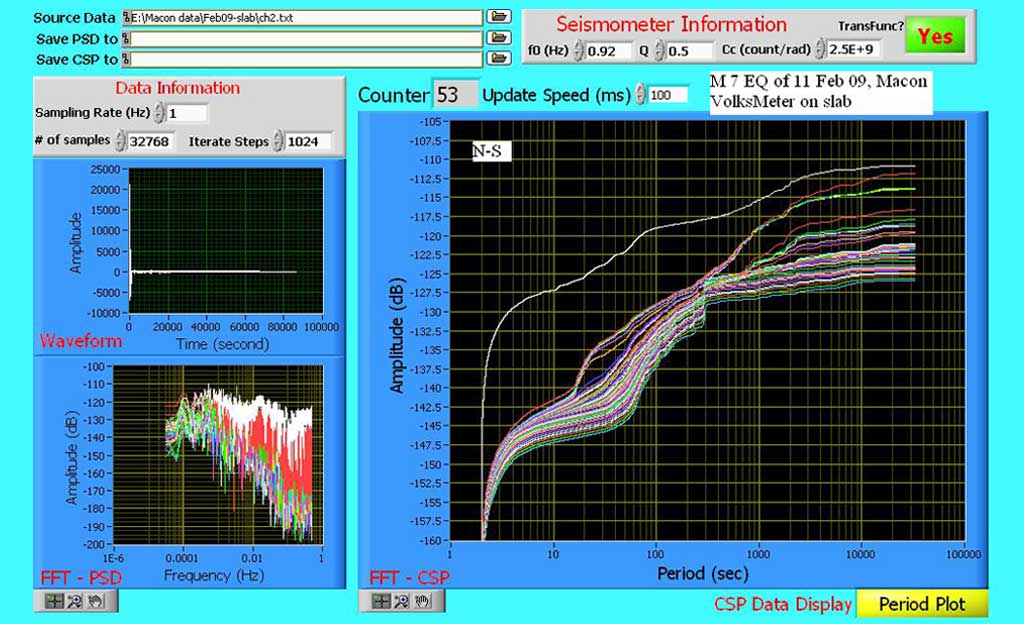
Macon, GA - Slab - N/S - Magnitude 7.2 - Click for large image

Macon, GA - Slab - E/W - Magnitude 7.2 - Click for large image
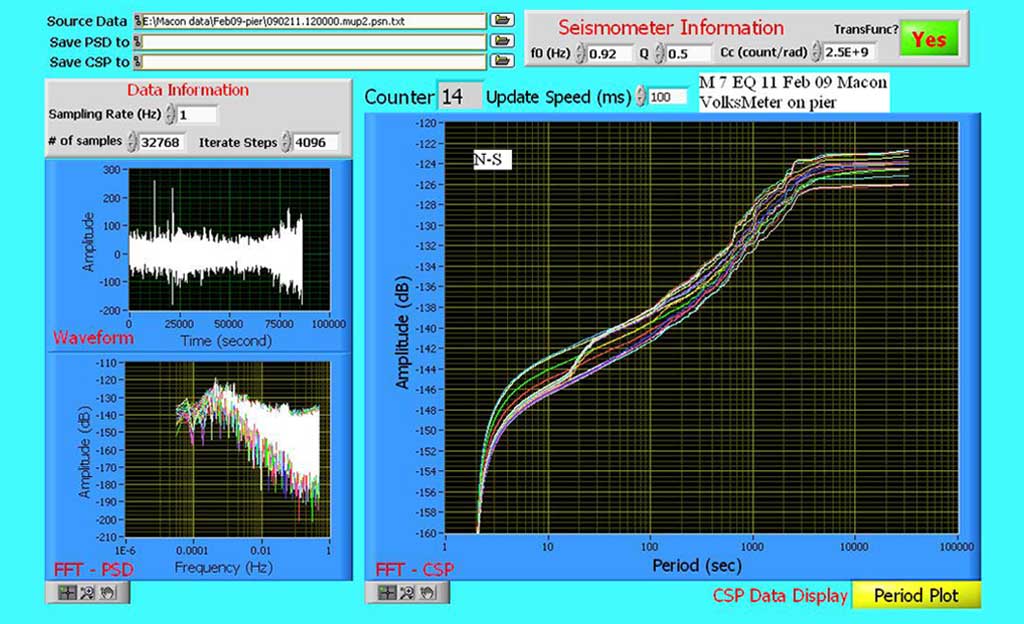
Macon, GA - Pier - N/S - Magnitude 7.2 - Click for large image
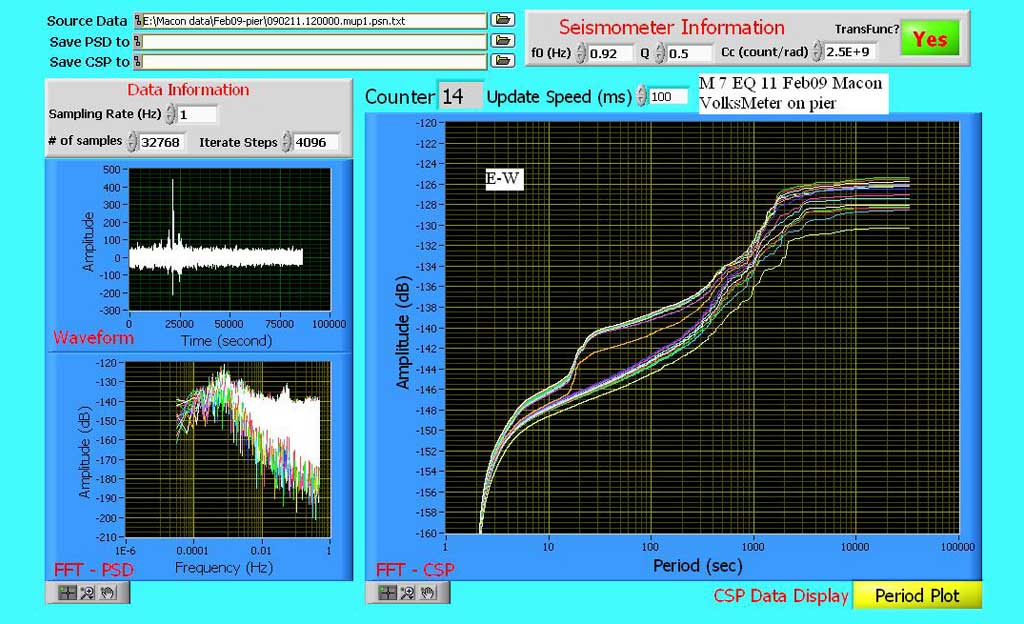
Macon, GA - Pier - E/W - Magnitude 7.2 - Click for large image
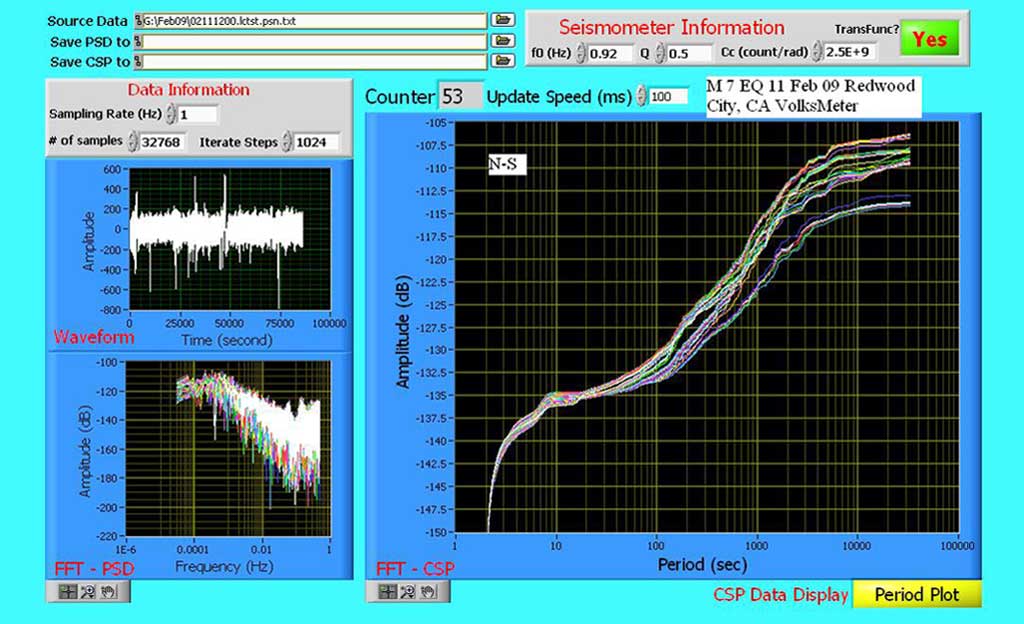
Redwood City, CA - N/S Magnitude 7.2 - Click for large image
There are some things that need seriously to be clarified concerning theory of seismometers, since there is so much confusion; not only among amateur seismologists, but also even many professional geoscientists.
Ultimately, the ONLY source of seismograph excitation (no matter the instrument design) is ENERGY. Additionally, the ONLY thing that delivers energy to the seismometer is Earth's ACCELERATION at the site of the instrument. This is true not only for the instrument's response to earthquake waves whose periods are shorter than about 300 s, but also for earth 'hum' in which the instrument responds mainly to tilt, when the periods are greater than about 300 to 1000 s. Dr. Randall D. Peters - http://physics.mercer.edu/
Presented by ARPSN
Amateur Radio Public Seismic Network
